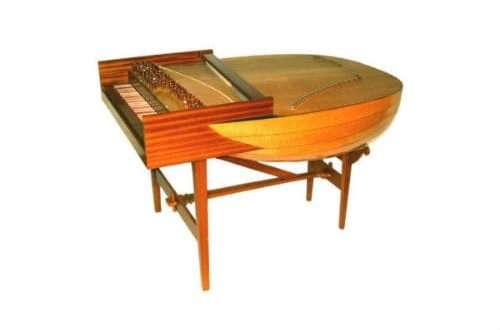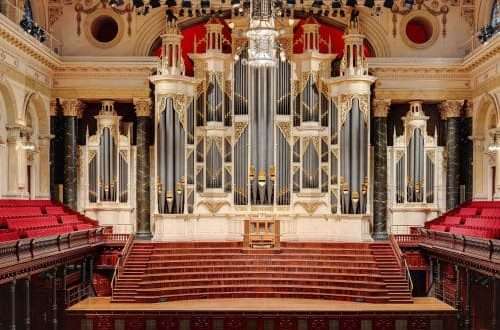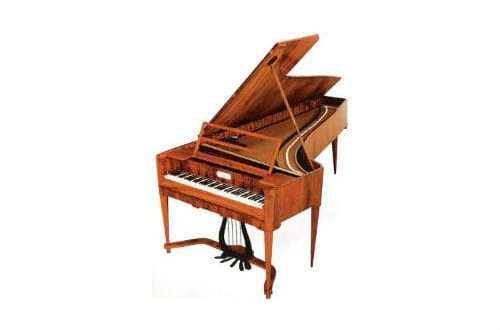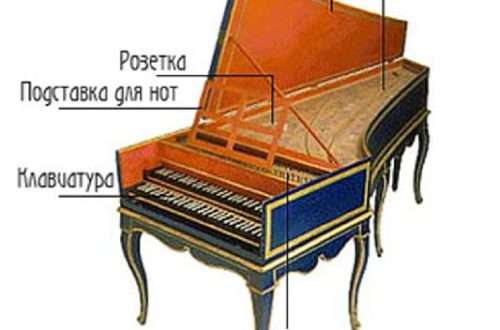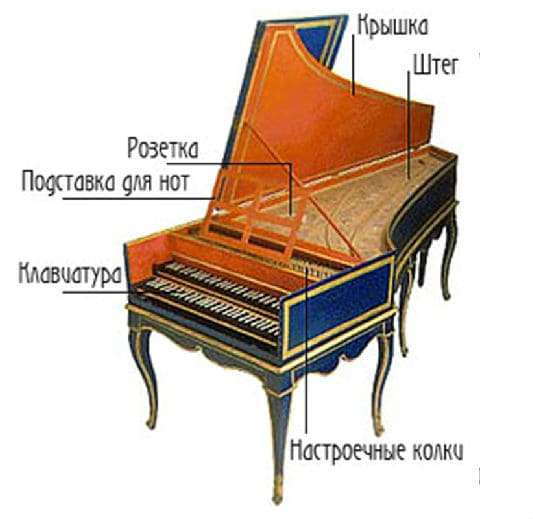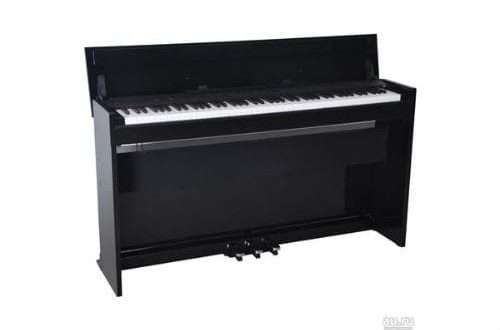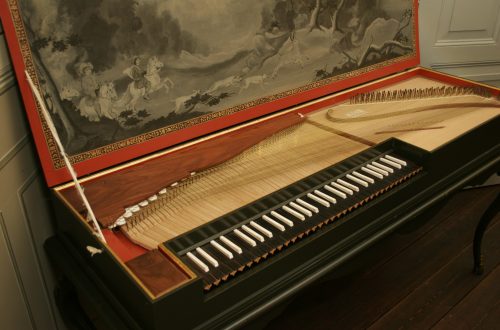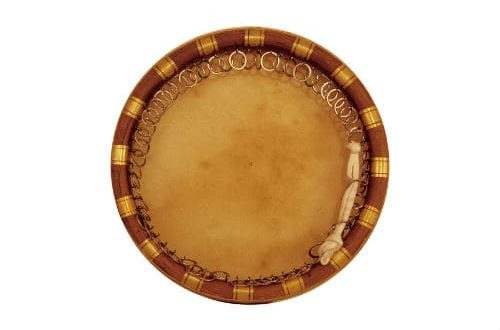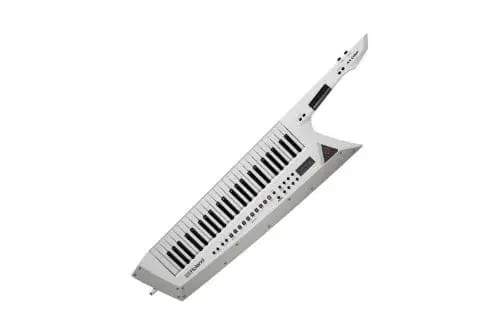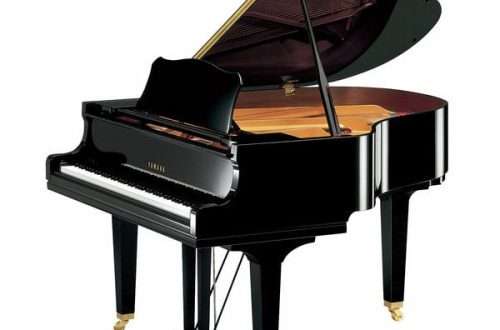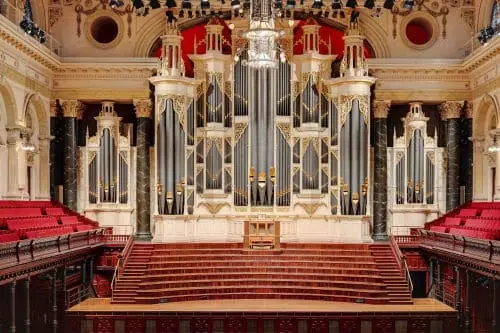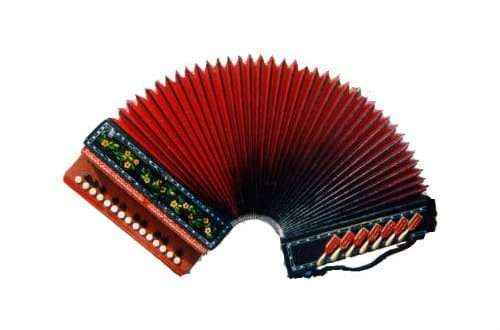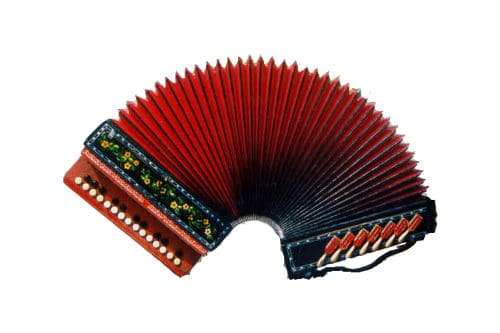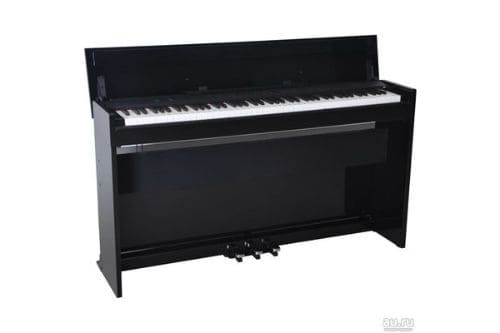Keyboards
Keyboard musical instruments include any instruments that have a piano or organ keyboard. Most often, in a modern interpretation, keyboards mean a grand piano, piano, organ, or synthesizer. In addition, this subgroup includes the harpsichord, accordion, melotron, clavichord, harmonium.
Hammer piano: description of the instrument, history, sound, use
The hammer-action piano is an ancient musical instrument of the keyboard group. The principle of its device is not much different from the mechanism of a modern grand piano or piano: while playing, the strings inside it are struck by wooden hammers covered with leather or felt. The hammer action piano has a quiet, muffled sound, reminiscent of a harpsichord. The sound produced is more intimate than a modern concert piano. In the middle of the 18th century, Hammerklavier culture dominated Vienna. This city was famous not only for its greatest composers, but also for its excellent instrument makers. Classical works from the 17th to 19th centuries are performed on…
Saratov accordion: instrument design, history of origin, use
Among the variety of Russian musical instruments, the accordion is truly loved and recognizable by everyone. What kind of harmonica has not been invented. Masters from different provinces relied on the traditions and customs of antiquity, but tried to bring something of their own to the instrument, putting a piece of their soul into it. The Saratov accordion is perhaps the most famous version of the musical instrument. Its distinguishing feature is small bells located on the left semi-body above and below. The history of the origin of the Saratov harmonica dates back to the middle of the 1870th century. It is known for certain about the first workshop that…
Harpsichord: description of the instrument, composition, history, sound, varieties
In the XNUMXth century, playing the harpsichord was considered a sign of refined manners, refined taste, and aristocratic gallantry. When distinguished guests gathered in the living rooms of the rich bourgeois, music was sure to sound. Today, a keyboard stringed musical instrument is only a representative of the culture of the distant past. But the scores written for him by famous harpsichord composers are used by contemporary musicians as part of chamber concerts. Harpsichord device The body of the instrument looks like a grand piano. For its manufacture, precious woods were used. The surface was decorated with ornaments, pictures, paintings, corresponding to fashion trends. The body was mounted on legs.…
Keyboard: description of the instrument, history of origin, use
The keyboard is a lightweight keyboard instrument. It is a synthesizer or midi keyboard similar in shape to a guitar. The name is formed from the combination of the words “keyboard” and “guitar”. In English, it sounds like “keytar”. In Russian, the name “comb” is also common. The musician is free to move around the stage as the instrument is held over the shoulder by the strap. The right hand presses the keys, and the left activates the desired effects, such as tremolo, located on the neck. The Orphica, a portable piano of the late XNUMXth century, is considered the oldest progenitor of the clavitar. The inventor of the musical…
Symphonic organ: description of the instrument, history of appearance, famous specimens
The symphonic organ rightfully bears the title of the king of music: this instrument has incredible timbre, register capabilities, and a wide range. He is quite capable of replacing a symphony orchestra on his own. A huge structure the height of a multi-storey building can have up to 7 keyboards (manuals), 500 keys, 400 registers and tens of thousands of pipes. The history of the emergence of a grandiose instrument that can replace an entire orchestra is associated with the name of the Frenchman A. Covaye-Collus. His offspring, equipped with a hundred registers, decorated the Parisian church of Saint-Sulpice in 1862. This symphony organ became the largest in France. The…
Lute harpsichord: instrument design, history of origin, sound production
The lute harpsichord is a keyboard musical instrument. Type – chordophone. It is a variation of the classical harpsichord. Another name is Lautenwerk. Design The device is similar to a conventional harpsichord, but has a number of differences. The body is similar in appearance to the image of the shell. The number of manual keyboards varies from one to three or four. Multiple keyboard designs were less common. The core strings are responsible for the sound of the middle and upper registers. Low registers remained on metal strings. The sound was plucked at a far distance, providing a more gentle sound production. Pushers installed opposite each key are responsible for…
Livenskaya accordion: composition, history, sound, use
The harmonica appeared in Russia in the 1830th century. It was brought in by German musicians in the XNUMXs. Masters from the city of Livny, Oryol province, fell in love with this musical instrument, but were not satisfied with its monophonic sound. After a series of reconstructions, it became a “pearl” among the Russian harmonicas, was reflected in the works of the great Russian writers and poets Yesenin, Leskov, Bunin, Paustovsky. Устройство The main feature of the Liven accordion is a large number of borins. They can be from 25 to 40, while other varieties have no more than 16 folds. When stretching the bellows, the length of the tool…
Digital piano: what is it, composition, advantages and disadvantages, how to choose
“Digital” is actively used by musicians and composers due to its wider possibilities and many functions than the acoustic piano. But along with the advantages, this musical instrument also has its disadvantages. Tool device Externally, the digital piano resembles or completely repeats the design of a conventional acoustic piano. It has a keyboard, black and white keys. The sound is identical to the sound of a traditional instrument, the difference is in the principle of its extraction and device. The digital piano has ROM memory. It stores samples – unchangeable recordings of analogues of sounds. ROM stores acoustic piano sounds. They are of good quality, as they are carried over…
Doira: instrument composition, history, use, playing technique
In Uzbek folk culture, the round hand drum is the most popular, used to create various rhythms during national dances. Устройство All Eastern peoples have their own drum and tambourine. Uzbek doira is a symbiosis of two members of the percussion family. Goat skin is stretched over wooden rings. It acts as a membrane. Metal plates, rings are attached to the body, making sounds according to the principle of a tambourine during strikes or rhythmic movements of the performer. Jingles are attached to the inner edge. Percussion musical instrument in diameter has a size of 45-50 centimeters. Its depth is about 7 centimeters. The number of jingles is from 20…
Piano: instrument composition, dimensions, history, sound, interesting facts
Piano (in Italian – pianino) – is a kind of piano, its smaller version. This is a string-keyboard, sensual musical instrument, the range of which is 88 tones. Used for playing music in small spaces. Design and function The four main mechanisms that make up the design are the percussion and keyboard mechanisms, the pedal mechanisms, the body, and the sound apparatus. The back wooden part of the “torso”, protecting all internal mechanisms, giving strength – futor. On it is a peg board made of maple or beech – virbelbank. Pegs are driven into it and strings are stretched. Piano deck – a shield, about 1 cm thick from several…


